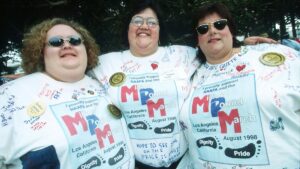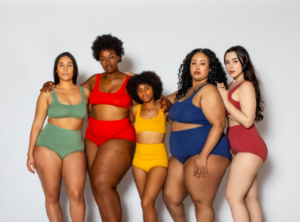The fat positivity movement boasts a rich history, intertwined with the fight against discrimination and the quest for body acceptance. However, its journey hasn’t been without complexities. One ongoing debate centers on the perception of fatness and its connection to a sexual fetish.
Before the Fat Positivity Movement
The body positivity movement we see today has strong roots in the activism of the 1960s and 1970s. Led by larger-bodied women of color, this movement fought against the negative stereotypes associated with weight and championed self-love for all body types. During this era, societal pressures for thinness were immense, with diet culture firmly entrenched and negative stereotypes about larger bodies running rampant.
Media portrayal reinforced societal norms. Fashion magazines and advertisements featured a constant parade of thin models, creating a limited definition of beauty. People of larger sizes were rarely seen, further contributing to their marginalization. Despite the dominance of thinness, whispers of change began to emerge:
-
The Feminist Movement: The 1960s feminist movement, focusing on female empowerment, challenged beauty standards that objectified women.
-
The “Fat-In” of 1967: A pivotal moment, this protest in New York City saw hundreds gather to challenge weight bias and advocate for self-acceptance.
These early actions laid the groundwork for the fat acceptance movement, which gained momentum in the late 20th century.

Early Stirrings of Activism
The early decades of the fat positivity movement laid the groundwork for the more prominent movement we see today. The early activists paved the way for a future where self-love and body acceptance are celebrated for all body types. The National Association to Aid Fat People (NAAFP) was founded in 1969, providing a crucial space for community and support.
NAAFP chapters organized protests against weight discrimination and advocated for size-inclusive clothing options. They challenged the medical establishment’s focus on weight loss as the sole solution to health issues. The early fat positivity movement focused on challenging the narrative that fatness was inherently unhealthy or unattractive. Activists argued for a broader definition of beauty and the importance of self-acceptance at any size.
Publications like “The Radical Diet” (1970) offered a platform for these voices, promoting healthy eating habits without focusing on weight loss. The 1970s and 1980s saw the fat positivity movement truly blossom.

Fat Liberation and the Fatosphere
The internet’s rise in the 1990s coincided with the Fat Liberation movement. Online forums, blogs, and websites – the “fatosphere” – emerged as vital spaces for connection and community building. The Fatosphere of the 1990s and 2000s laid the groundwork for the current body positivity movement. It provided a foundation for challenging weight stigma and promoting body acceptance.
Fat Liberation emerged from feminist critiques of beauty standards. Activists argued that the pressure to be thin was a form of patriarchal control over women’s bodies. Fat Liberation specifically focused on dismantling the social and cultural systems that discriminated against larger bodies. It aimed not just for individual self-acceptance, but for societal change.

Fetishizing the Fat
The fat positivity movement boasts a rich history, intertwined with the fight against discrimination and the quest for body acceptance. However, its journey hasn’t been without complexities. One ongoing debate centers on the perception of fatness and its connection to a sexual fetish. Fat fetishism is a sexual attraction to overweight or obese people due primarily to their size. It can manifest in various ways, from a preference for certain body types to more specific desires like “feederism” (arousal from weight gain) or “immobility” (attraction to restricted movement due to size).
On the face of it, fat fetishism might seem like any other preference. However, it can become problematic when weight becomes the sole focus, reducing a person to their size. Our society often demonizes fatness. Fat fetishism can be seen as a counterpoint to this negativity. Yet, it can reinforce the idea that fat bodies only hold value in a sexualized context.
Can someone be attracted to a larger body without it being a fetish? Absolutely. The key lies in appreciating someone for who they are, not just their size. The fat positivity movement continues to grapple with the fetishization issue.








